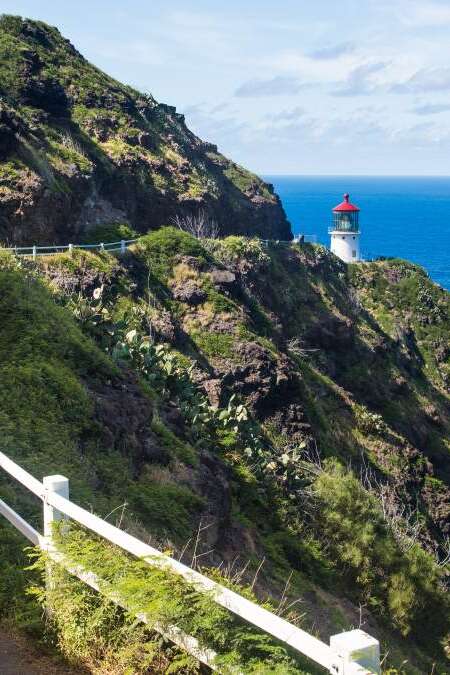Kaena Point Trail holds the reputation as one of the most scenic hikes in Oahu, Hawaii. This trail, predominantly flat, offers an enticing blend of striking geography and abundant wildlife, promising an unforgettable experience for every adventurer. Its coastal path stretches towards the island’s westernmost tip, unveiling a picturesque panorama of seascapes, mountain vistas, and vibrant natural habitats. Join us as we embark on a journey, picking our way through the gentle slopes and sandy stretches of the captivating Kaena Point Trail.
Geographical Location
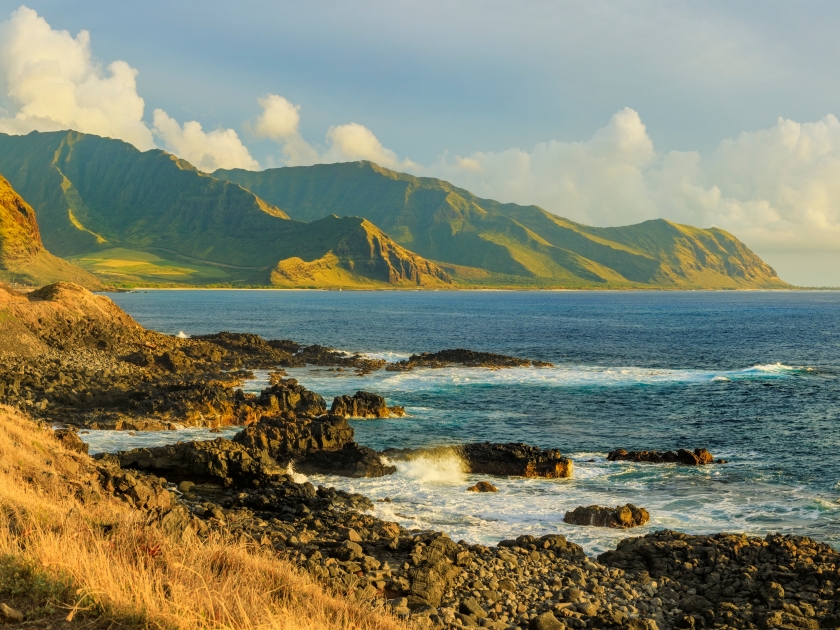
Kaena Point Trail is precisely located in Kaena Point State Park, stretching from the park’s entrance near the town of Waianae to the island’s westernmost tip, Kaena Point. This remote area is part of the Waianae Mountain Range, offering a serene escape from city life and allowing hikers to immerse themselves in the untouched beauty of Hawaii’s natural landscapes. Geographically, the coordinates for Kaena Point are approximately 21.5758° N latitude and 158.2733° W longitude.
Trail Overview
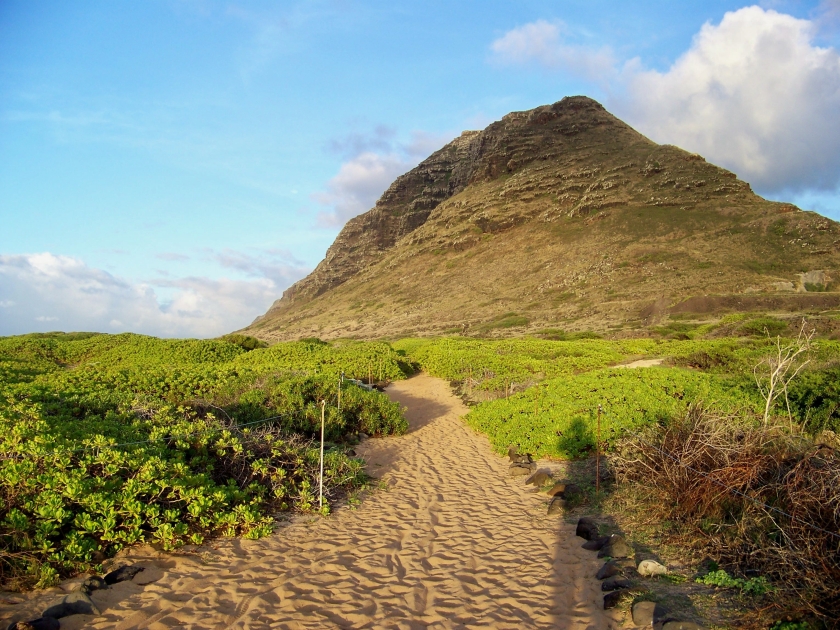
The geographical positioning of Kaena Point Trail not only offers a unique hiking experience but also serves as a gateway to a remote and wild landscape, providing a sense of isolation and tranquility that sets it apart from other trails on the island. The trailhead can be found at the end of Farrington Highway, marking the beginning of a remarkable journey along the rugged coastline. This pristine location boasts panoramic views of the Pacific Ocean, with the trail winding through a mix of coastal dunes, lush vegetation, and rocky outcrops. As hikers venture along the path, they are greeted by the sight and sound of the ocean, creating an immersive experience that encapsulates the untouched beauty of Hawaii’s northwest region. The trail unfolds within the Kaena Point State Park, encompassing approximately 5 miles of diverse terrain.
Distance and Difficulty Level
The trail spans approximately 5 miles round trip, providing hikers with a moderately challenging trek along a coastal path that showcases breathtaking ocean views, rugged cliffs, and vibrant flora. The difficulty level is considered moderate, making it accessible to a wide range of hikers, including those with intermediate hiking experience. While the trail is not overly strenuous, its uneven terrain and occasional rocky sections add an element of challenge. It’s a perfect choice for those seeking a leisurely hike with a rewarding view, but remember to bring plenty of water, sunscreen, and a hat for protection against the Hawaiian sun.
Terrain Description
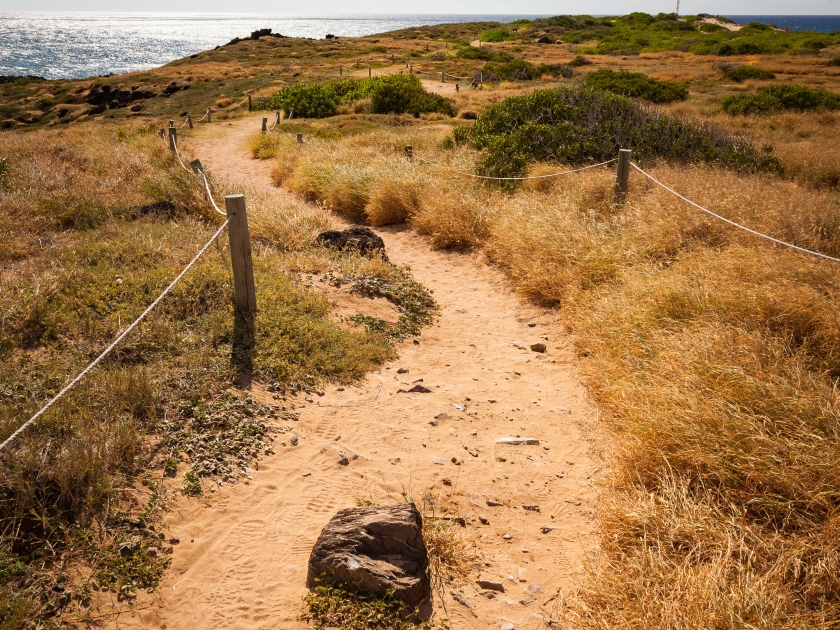
The terrain of Kaena Point Trail is a harmonious blend of sandy beaches and rugged coastal paths. The trail begins on a comfortable, flat path, gently leading hikers through native flora and fauna. As it extends towards the coastline, the terrain transitions to sandy stretches, offering a moderate challenge. A final portion of the trail takes you over some rocky outcrops, requiring careful navigation. Despite these variations, the trail remains fairly accessible, making it a suitable adventure for hikers of various skills and experience levels.
Hiking Route
There are two routes to explore Ka‘ena Point, each offering a distinct perspective of Oahu’s scenic beauty. Starting from the Wai‘anae side, hikers can access the trailhead at the end of the paved road in the Keawaula Section of Ka‘ena Point State Park. The 2.4-mile journey follows a dirt roadway along the southwest shoreline, featuring boulder beaches, tidepools, and occasional blowholes. The trail showcases cliffs rising on the northeast, providing a captivating coastal experience.
Alternatively, from the Mokule‘ia side, hikers can park at the end of the paved road and follow a 2.5-mile dirt roadway. This route traverses a flat coastal plain marked by a limestone reef and dunes, leading to the Natural Area Reserve. Hikers are reminded to tread carefully, avoiding damage to native flora and respecting nesting seabirds. A navigational light signals the point, and visitors are urged to stay on designated paths, with no animals permitted in the Reserve. The return journey involves retracing the initial path.
Hiking Time
The total hiking time for Kaena Point Trail largely depends on one’s fitness level and hiking experience. For an average hiker walking at a steady pace, it typically takes approximately 2-3 hours to complete the trail. However, this is based on a continuous hike without factoring in time for rest stops, wildlife viewing, or photography. Faster, more experienced hikers could potentially finish in under 2 hours, while those new to hiking or desiring a more leisurely pace may need up to 4 hours.
Traveler’s Note: Remember that the trail should be enjoyed at your own pace. It’s not a race – take your time to soak in the mesmerizing views and observe the unique flora and fauna Kaena Point has to offer.
Points of Interest
The Kaena Point Trail is punctuated by several notable points of interest that greatly enrich the hiking experience.
- Kaena Point Natural Area Reserve: The trail culminates at this protected natural reserve, an ecological haven that houses numerous native plant species and seabird colonies. It’s a prime spot for wildlife enthusiasts who can observe the rare Laysan albatross or spot Hawaiian monk seals basking on the shores.
- Waianae Range Panorama: Midway on the trail, hikers are treated to a breathtaking view of the Waianae Range. This mountain vista, with its rugged peaks and verdant slopes, contrasts beautifully with the azure Pacific.
- Albatross Nesting Grounds: During the breeding season (November to July), hikers can witness Laysan albatross nesting in their natural habitat. These majestic birds, with their impressive wingspans, present a thrilling display of Hawaii’s unique wildlife.
- Shipwreck Beach: Along the trail, you’ll pass Shipwreck Beach, named for the visible shipwreck that lies rusting off the coast. It adds an intriguing historical layer to the natural scenery.
- Natural Rock Formations: The coastal trail also features unique rock formations sculpted by the ocean’s relentless action over the years. These natural art pieces serve as interesting photographic subjects.
Wildlife and Flora
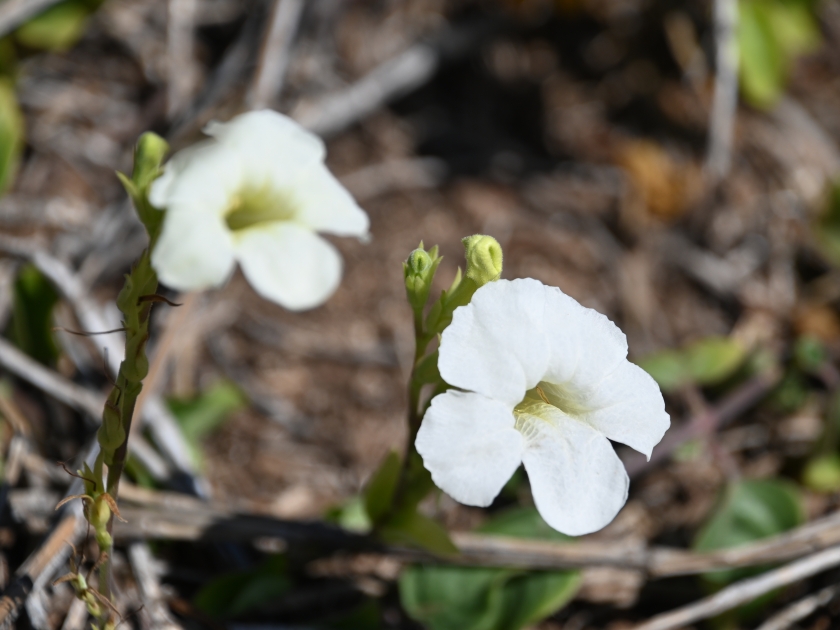
As you traverse the trail, you’ll be treated to a display of native fauna and flora that contribute immensely to the trail’s charm.
- Laysan Albatross: These large seabirds make Kaena Point their home, especially during the breeding season. Their impressive wingspans and graceful flight provide a rare spectacle for nature lovers.
- Hawaiian Monk Seals: Known as ‘Ilio-holo-i-ka-uaua’ in Hawaiian, these endangered seals can occasionally be spotted sunbathing on the trail’s secluded beaches.
- Naupaka Kahakai: This indigenous plant with its half-flower structure is a common sight along the coastline of the trail. According to native folklore, the half-flower represents separated lovers, adding a layer of mysticism to your hike.
- Hawaiian Spinner Dolphins: Keep an eye on the ocean as you hike, you might be lucky enough to spot pods of these playful dolphins frolicking in the waves.
- Pōhinahina: This native plant, recognized by its silver-blue leaves, often grows near the shore and is a beautiful addition to the trail’s lush coastal vegetation.
Pro Tips for Hiking the Kaena Point Trail
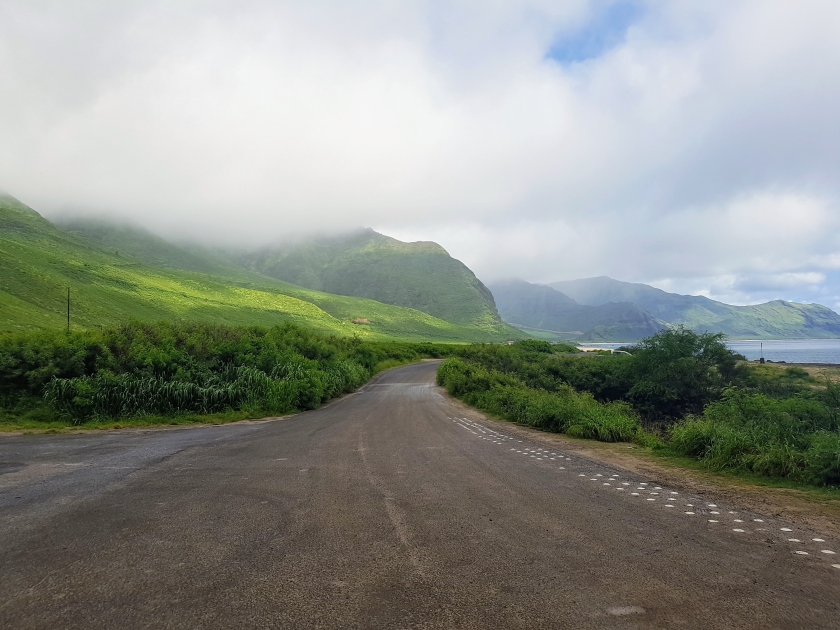
- Best Time to Hike: The trail is open year-round, but for the best experience, try to hike early in the morning to avoid the midday heat. If you wish to see the Laysan Albatross, plan your hike between November and July, which is their breeding season.
- Gear Up: Always wear sturdy, comfortable shoes as the terrain can be uneven at times. Bring plenty of water, sunscreen, and a hat for protection against the sun. A portable charger could come in handy, considering the numerous photographic opportunities along the trail.
- Check the Weather: The trail can get quite muddy and slippery after rainfall, making the hike more challenging. Always check the weather forecast before heading out.
- Respect Wildlife: The trail is home to many native species. While it can be exciting to see them in their natural habitat, remember to keep a respectful distance.
- Stay on the Trail: Help preserve the unique ecosystem by sticking to the marked trail. This not only protects the surrounding flora and fauna but also ensures you don’t get lost.
- Pack a Snack: There are no food facilities along the trail, so consider bringing a light snack for energy.
- Safety First: While the trail is generally safe, it’s always wise to let someone know where you’re going and when you expect to return. Hiking in pairs or groups is also a good idea.
Trail Maintenance and Closures
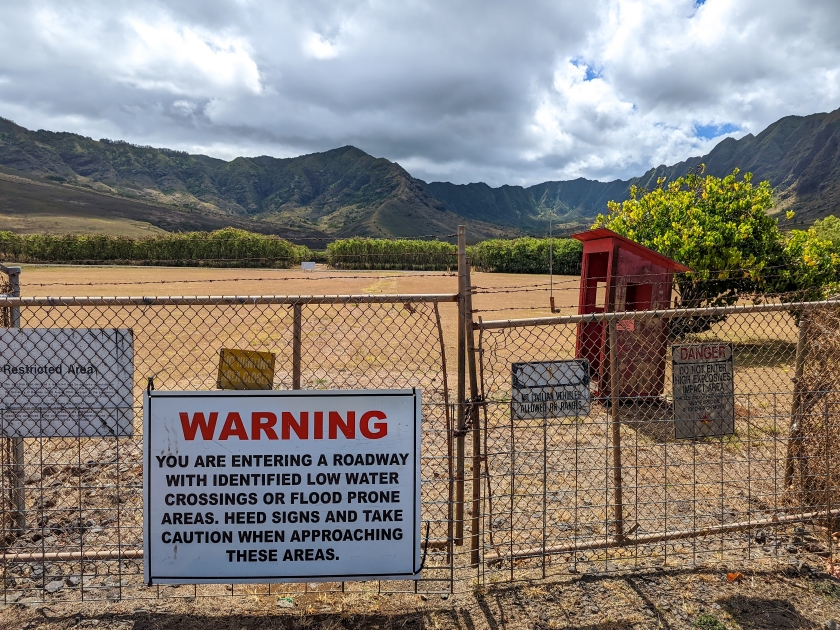
As of the latest update, both sections of Kaʻena Point State Park on Oʻahu have reopened. However, please note that the Mokuleʻia gate is temporarily closed to vehicle access due to road conditions. Walk-ins are still welcome, ensuring that hikers can explore the trail on foot.
Frequently Asked Questions (FAQs)
There are no facilities on the trail, so it’s recommended that hikers bring plenty of water, snacks, and any necessary supplies.
The trail is open from 6 AM – 7 PM. Overnight camping is not allowed.
Yes, the trail is suitable for children who are comfortable walking long distances. Ensuring they have appropriate footwear is recommended.
Unfortunately, pets are not allowed on the Kaena Point Trail to protect the native wildlife and ecosystem. It is essential to respect these regulations to maintain the natural habitat and ensure the safety of both hikers and wildlife.
No entrance fees or permits are required to hike the Kaena Point Trail. The trail is open to the public, allowing visitors to enjoy the natural beauty of the area without any additional costs.
The trail is open year-round, but it’s advisable to check weather conditions before heading out. Early morning hikes are often recommended to avoid the heat, and they provide an opportunity to witness stunning sunrise views over the Pacific Ocean. It’s also a good time to observe wildlife, as many animals are more active during the cooler parts of the day.
How to Get There
By Car
If you’re driving from Honolulu, take the H1 freeway westward until it becomes Farrington Highway (Route 93). Continue on this road, passing through Waianae and Makaha. The trailhead is located at the end of Farrington Highway, approximately an hour’s drive from central Honolulu. There’s a small parking lot available for hikers, but do arrive early as it tends to fill up quickly.
By Bus
Public transportation is a viable option for those without access to a car. From central Honolulu, you can take the Bus #52 (Wahiawa-Circle Island). Get off at Waialua High School and transfer to Bus #76 (Waialua-Mokuleia). This bus will take you to the end of the road at Mokuleia Beach Park, where the trailhead is a short walk away. Please note that the bus ride can take up to 2 hours, so plan accordingly. Always check the latest bus schedules on TheBus Honolulu’s official website.
Venture into the Untouched Beauty of Oahu’s Northwest Tip!
As you journey along this picturesque trail, you’ll come face to face with the vibrant ecosystems of Hawaii, showcasing a variety of native fauna, flora, and stunning geological formations. Each step on this trail brings a new revelation, from spotting a Laysan albatross in flight to witnessing Hawaiian spinner dolphins making waves. Remember to respect the environment and adhere to the hiking tips to ensure a memorable and enriching experience.




